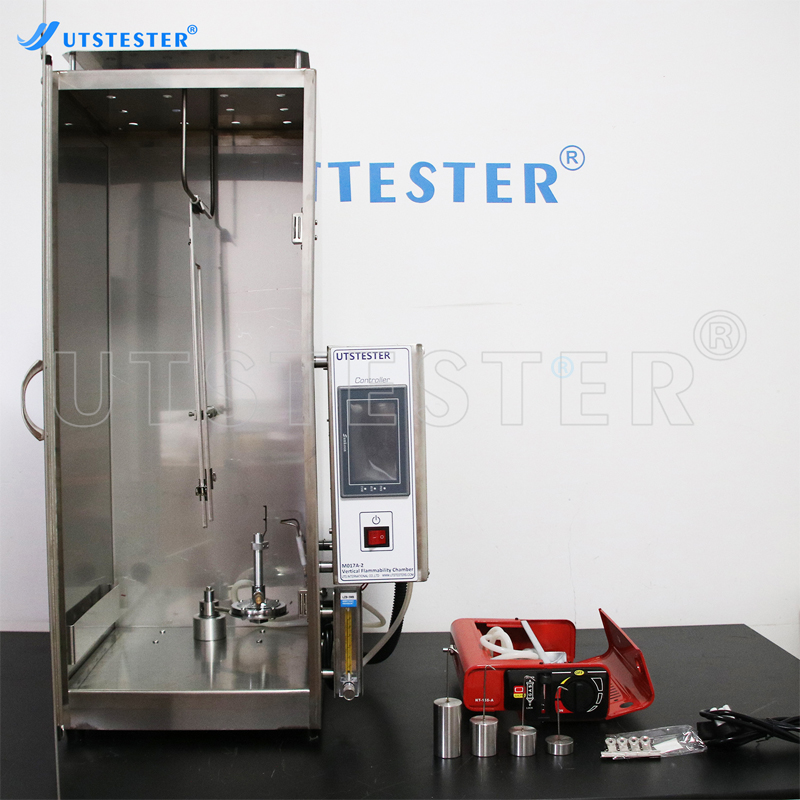 +86 152 6060 5085
+86 152 6060 5085
 +86 152 6060 5085
+86 152 6060 5085
Blog
Catalog
Latest Blog
GB/T 5455-2014 specifies test methods for determining the flame retardant properties of various flame-retardant textiles to determine the tendency of textiles to continue burning, smoldering and carbonization.
Main parameters of vertical combustion tester:
1. Sample size: 80mm×300mm;
2. Ignition time: 12 seconds;
3. Ignition diameter: Φ11mm;
4. Afterburning time and smoldering time: 0~999.9 seconds;
5. Flame height: 40mm high;
6. Gas used: propane or butane or liquefied petroleum gas.
Test principle:
Place a sample of a certain size under the specified burner and ignite it. After the specified ignition time, measure the afterburning, smoldering time and damage length of the sample.
Sample requirements:
1. The sample should be measured from a position 1/10 of the width from the edge of the fabric. The sample size is 300mm
2. For each sample, take five samples each in the warp and weft directions (longitudinal and transverse). The warp (longitudinal) samples cannot be taken from the same warp yarn, and the weft (transverse) samples cannot be taken from the same weft yarn.
3. The sample should be placed in a secondary standard atmosphere in accordance with the provisions of GB6529, that is, a temperature of 20°C ± 2°C and a relative humidity of 65% ± 3%. Depending on the thickness of the sample, it should be placed for 8-24 hours until equilibrium is reached.
Then, take it out and put it into a sealed container, or process it according to the conditions agreed by all parties concerned.
The arbitration test should be left for 24 hours.
Test Results:
1. Calculate the average afterburning time, smoldering time and damage length of the five samples in the warp (longitudinal) and weft (transverse) directions.
2. Record the samples in which dripping objects caused burning of absorbent cotton during the burning process.
3. For some samples, several of them may be burned through. Record the actual measured values of the afterburning time, smoldering time and damage length of each unburned sample, and indicate how many pieces are burned in the test report. The sample is burned through.
4. For specimens that are melted and connected together during combustion, the highest point of melting should be used as the criterion when measuring the damage length.

Email: hello@utstesters.com
Direct: + 86 152 6060 5085
Tel: +86-596-7686689
Web: www.utstesters.com